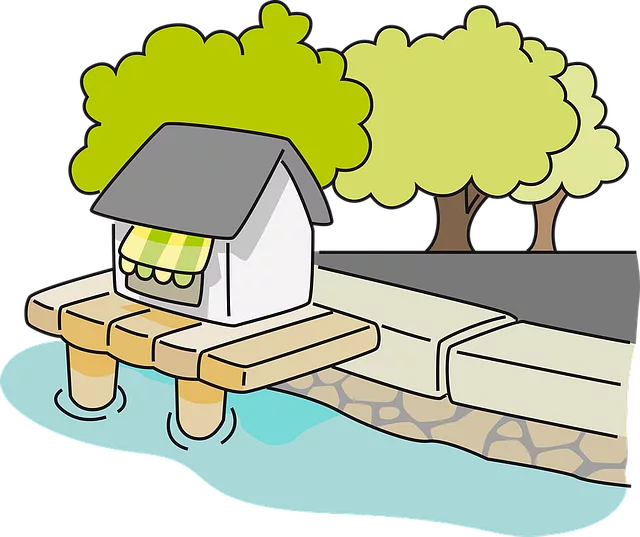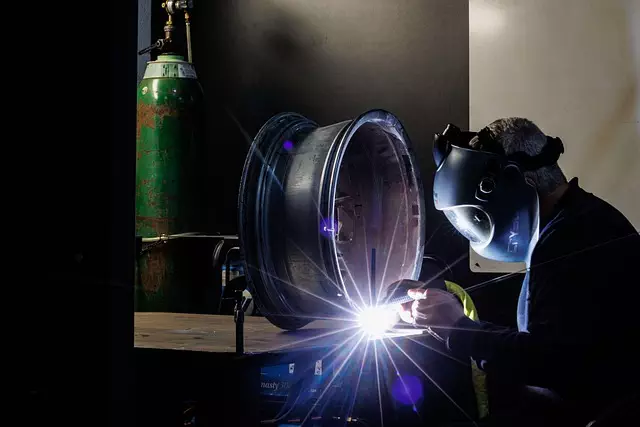Pier and Beam Foundation Repair: Techniques, Cost, & Maintenance Guide
Pier and beam foundations, known for flexibility but susceptible to settling and shifting, require r…….

Pier and beam foundations, known for flexibility but susceptible to settling and shifting, require regular inspection and maintenance. Early repair involves releveling piers or reinforcing with steel beams to prevent further damage. The meticulous process includes non-invasive inspections, removal of degraded materials, realigning piers, and using high-strength steel for reinforcement. Choosing the right materials ensures structural integrity and longevity. Pier leveling and reinforcement techniques extend building lifespans. Regular inspections identify residual weaknesses, requiring additional reinforcement. Prompt repair addresses issues like uneven floors, doors, and cracks to ensure home safety and stability. Cost varies based on damage extent, emphasizing the importance of detailed quotes from specialized contractors. Proactive maintenance, including debris removal and crack sealing, is crucial for protecting against rot and structural damage.
The stability of your home’s foundation is paramount, especially in regions prone to shifting soils. Pier and beam leveling involves a meticulous process to address common issues like uneven settling or structural damage. This comprehensive guide explores pier and beam foundations, from understanding their basics to the intricate reinforcement techniques used for repair. We’ll delve into materials, effective leveling strategies, post-repair stability, signs demanding professional help, cost considerations, and maintenance tips, empowering you with knowledge on Pier and Beam Foundation Repair.
Understanding Pier and Beam Foundations

Pier and beam foundations, a common structural system in many older homes, are designed to support the weight of the structure by using vertical supports (or piers) connected to horizontal beams. This method provides flexibility and allows for variation in soil conditions, making it ideal for regions with differing ground levels or unstable soils. However, over time, these foundations can settle or shift due to various factors such as weather changes, soil erosion, or heavy loads on the structure.
Pier and beam foundation repair is often necessary when these adjustments cause unevenness or stress in the building. Techniques include releveling, where piers are adjusted to ensure the structure sits evenly, and reinforcement, which involves adding structural support like steel beams or plates to strengthen the foundation and prevent future damage. Regular inspection and maintenance are key to preserving this type of foundation, ensuring that any issues are addressed promptly to avoid more costly repairs down the line.
Common Issues with Pier and Beam Structures

Pier and beam structures, while popular for their versatility and aesthetic appeal, are susceptible to several common issues over time. One of the primary concerns is uneven settling, which can occur due to soil shifts, poor initial construction, or changing water tables. This differential settling often results in misaligned beams, distorted walls, and uneven floors, requiring professional Pier and Beam Foundation Repair.
Another prevalent problem is structural weakness, particularly in older structures. The pier and beam system relies on the integrity of its individual components—beams, piers, and joists—to support the weight of the structure. Over time, these elements can become damaged due to rot, insect infestation, or extreme weather events, compromising the overall stability of the building. Proper maintenance and periodic Pier and Beam Foundation Repair are crucial to address these issues before they lead to more severe structural damage.
The Process of Leveling and Reinforcement

The process of leveling and reinforcement in pier and beam foundation repair involves several meticulous steps to ensure structural integrity and stability. It begins with a thorough inspection to identify any unevenness or damage in the pier and beam system. This often requires non-invasive methods such as visual assessments, load tests, and laser scanning to accurately map out the foundation’s current state.
Once identified, the repair work commences with the removal of any damaged or degraded materials, followed by the realigning of piers to achieve a level foundation. Reinforcement is then implemented using high-strength steel beams or bars that are strategically placed to enhance load-bearing capacity and prevent future settling. This involves careful planning to ensure the reinforcement complements the existing structure seamlessly, maintaining the aesthetic and structural harmony of the building.
Materials Used for Foundation Repair

When undertaking pier and beam foundation repair, selecting the right materials is paramount for ensuring structural integrity and longevity. Common choices include high-quality concrete, steel beams, and reinforced cement columns. Concrete, known for its strength and durability, is often used for repairing or replacing damaged piers. Steel beams offer exceptional load-bearing capacity, making them ideal for beam reinforcement, especially in areas prone to heavy loads or seismic activity.
Renowned for their versatility and resistance to corrosion, reinforced cement columns are another crucial component. These materials work in harmony to stabilize the foundation, addressing issues like settlement, tilting, or shifting. The expertise of professionals is essential in sourcing and installing these materials correctly, thereby guaranteeing a robust pier and beam foundation repair that meets structural requirements and stands the test of time.
Techniques for Effective Pier and Beam Leveling

Pier and beam leveling involves precise adjustments to ensure the structural integrity of buildings with this foundation type. One effective technique is the use of hydraulic jacks, which allow for controlled and gradual raising or lowering of specific beams and piers. This method is particularly useful when dealing with minor settling issues or uneven soil conditions. By carefully monitoring the jacking process, professionals can achieve a level foundation without causing further damage.
Another approach to pier and beam leveling is the installation of steel beams or plates as reinforcement. These additional structural elements provide extra support and stability to the existing foundation. This technique is especially beneficial for older structures where original materials may have deteriorated over time. Combining leveling with reinforcement ensures a robust solution for Pier and Beam Foundation Repair, extending the lifespan of the building and preventing future structural complications.
Ensuring Long-Lasting Stability After Repair

After undergoing pier and beam foundation repair, ensuring long-lasting stability is paramount to prevent future issues. The first step is to thoroughly inspect the entire structure to identify any remaining weaknesses or damage. This meticulous process involves assessing the condition of the beams, piers, and supporting elements to guarantee they can withstand environmental factors like settling, shifting soil, and varying weather conditions.
Proper reinforcement techniques are then implemented to enhance structural integrity. This may include adding steel braces, reinforcing joints with high-strength materials, or installing new piers to provide a solid base for the foundation. By combining these strategies, pier and beam foundation repair can deliver lasting stability, ensuring homes remain secure and structurally sound for years to come.
When to Consider Professional Help

If your home, particularly those built on pier and beam foundations, is showing signs of structural issues like uneven floors, doors that stick, or cracks in the walls, it might be time to consider professional help for pier and beam foundation repair. These indicators suggest that your foundation may have settled or shifted, which can lead to more severe problems if left unaddressed.
Professional contractors specializing in pier and beam leveling and reinforcement have the expertise and tools needed to assess the situation accurately. They can determine whether the problem is isolated or widespread and recommend appropriate solutions. From underpinning and adjusting supports to complete foundation replacement, their goal is to stabilize your home’s structure, ensuring its safety and longevity.
Cost Considerations for Foundation Repairs

Pier and beam foundation repairs can be a significant investment, so it’s crucial to consider the cost implications before starting any work. The complexity of the repair process varies depending on the extent of damage, which means costs can range from modest for minor adjustments to substantial for extensive structural reinforcement. Homeowners should obtain detailed quotes from qualified contractors who specialize in pier and beam foundation repair to understand the financial commitment required.
Understanding these costs upfront helps set realistic expectations and ensures you’re making informed decisions about your home’s longevity and stability. In terms of Pier and Beam Foundation Repair, budgeting appropriately for materials, labor, and potential unforeseen issues is essential to prevent financial surprises during or after construction.
Maintaining Your Pier and Beam Foundation

Maintaining a pier and beam foundation is essential for ensuring structural integrity and longevity, especially in regions prone to shifting soil or seismic activity. Regular inspections are key; looking for signs of rot, settling, or damage to the wooden elements. Prompt repair of any issues can prevent more severe problems down the line, including misaligned doors and windows, uneven flooring, or even structural collapse.
There are several proactive measures property owners can take to care for their pier and beam foundations. This includes keeping the area clear of debris and vegetation that could obstruct drainage, as well as regularly inspecting and cleaning the drainpipes to ensure water flows away from the foundation. Additionally, applying waterproof barriers and sealing cracks can help protect against moisture intrusion, a primary cause of wood rot and structural damage.







